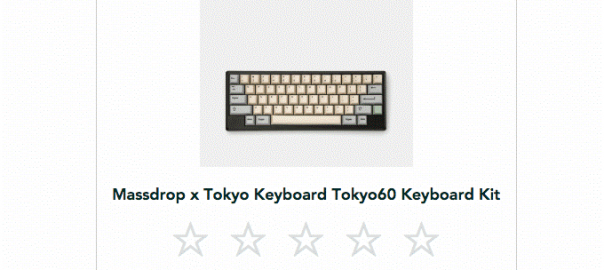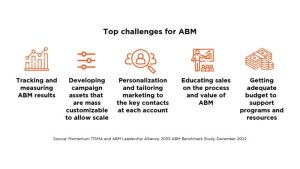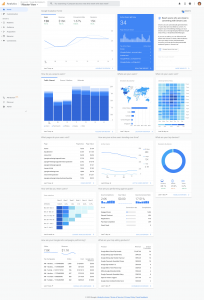— May 22, 2019
Imagine a scenario. You are about to start researching for a trip to a nearby country. You need to know details into everything, from the flight fares, hotels to the places you can visit. Just then, you receive an email that talks about offers, details into the trip to that same place, and other things. You obviously click that email to know what it has to offer.
Email marketing is all about sending the right message at the right time to the right person at the right place. You can never miss out on the right opportunity to convert. However, sending the right type of email also makes a lot of difference. There are the promotional emails, and the transactional or behavior triggered emails that you might have to send, depending on the stage of the sales funnel they are in, and what the audience is looking for.
Transactional emails are said to be the most opened email types, and it is one of the best ways to get your target audience to at least look at your email.
So, what is the difference between a transactional email and a promotional/marketing email.
Transactional Emails vs. Marketing Emails
The email that is sent to the user once an action has been triggered by them is known as transactional email. Few examples of transactional emails include confirmation of order, the welcome email etc.
Marketing emails, on the other hand, are sent to the email list, at a relevant time, with a personalized message, if possible. The newsletters, promotional and sales email campaigns as well as the welcome email series are few examples that are part of the marketing emails.
The transactional emails are something that the user expects, which is why they have 8x open and click-through rates as compared to the marketing emails. The transactional emails, as they contain links to other products, generate 6x revenue as compared to the marketing emails.
A transactional email has to be sent out by the brand, just to confirm the recent action taken by the user.
Now that you are aware of the difference between transactional and marketing emails, let’s get down to the types of transactional emails that you can send out to your customer.
The Different Transactional Email Types
There are different variants to a transactional email, and each one is sent for a specific action. You should know of these basic kinds that are used commonly in almost every industry. We will discuss the email types as well as the behaviour that triggers it.
Registration Successful Email
Sending a registration email immediately after the user signs up for your brand’s newsletter or app is a mark of confirmation that the user is a part of your brand, starting now. In the confirmation email, you are expected to set the tone for the customer lifecycle, as defined by you. You can set the expectations for email frequency and other things with the confirmation email.
Harvest’s registration confirmation email is simple and quite precise. They set the expectations for the email with the 30-day trial statement. They have given contact details where you can seek help and have also given a CTA which allows you to take the next action in the sequence.
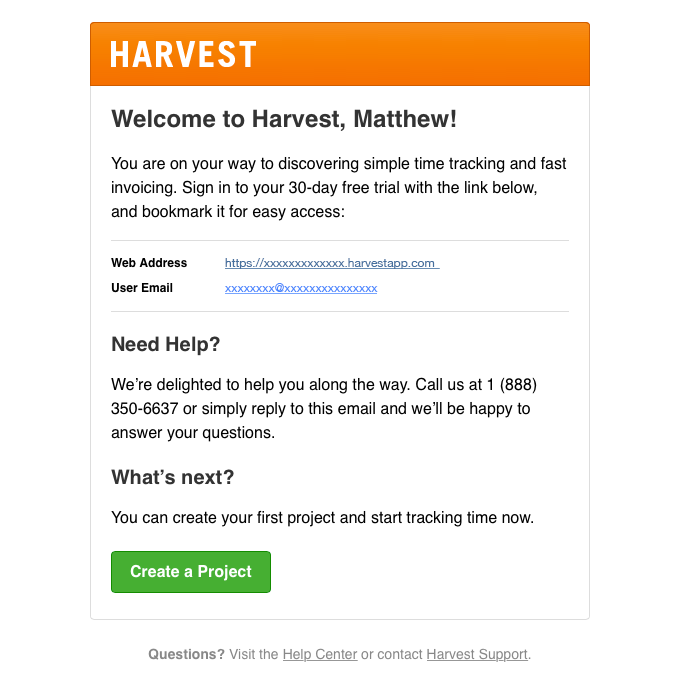
The Different Confirmation Emails
The second kind of transactional email that every customer expects once they have placed the order is the order confirmation email.
Whether you believe it or not, this is the most successful transactional email type, as it receives maximum open and click-through rates. In fact, some brands also add products that the users can buy in these emails. The idea is to get the user to make more purchases, and yes it does work.
The main inclusions in your order confirmation email should be the order number, the purchase details including the purchase amount and finally the tracking information. You can add the expected date of arrival of the products in the email.
The confirmation email helps the user know that the order was successfully placed.
The second confirmation email that you should send is the shipping confirmation. Once you have sent the product to the user, confirm the shipping so that they are aware of when the order will arrive at their doorstep. Secondly, you will induce a certain level of excitement in them. This email by Polaroid confirming the shipping of the product is the perfect example of confirmation emails. It helps the brand stay connected with the user and offers an excellent experience to the user.

Cart Abandonment Emails
These emails fall in the transactional email category. You can send an email asking why the user added products to the cart but, failed to complete the transaction. You can even ask why the user never returned to buy the product that they were looking at on the brand’s website or app. The cart abandonment emails are a way to get back the inactive customers by solving their issues. These emails help increase the conversions and generate more revenue for the brand.
When you are sending cart abandonment emails, you ought to make an offer and include a strong call-to-action to make your point.
MCM sends the perfect cart abandonment email to its customers. Along with the products present in the cart, the brand also sends the products that the user might be interested in, considering their past preferences. It is a unique way to get the user back to the website.
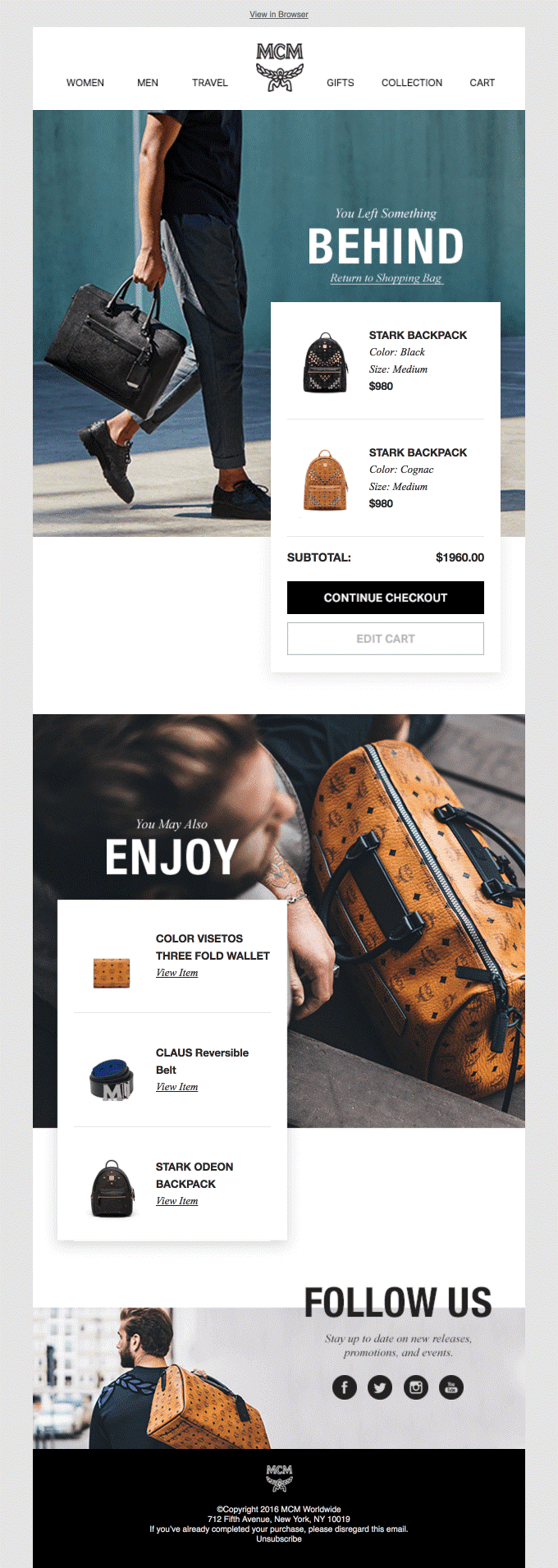
Feedback Emails
Asking for customer’s feedback shows how much you really care for their words, and how they felt about the products. It is a process that you should follow if you want users to stay connected with you.
While sending out the feedback emails make sure to add a proper CTA button, and add set of instructions that helps them fill out the feedback. You should also add the purchase details, such as the order date, the order amount etc. so that they can remember the purchase they have made.
Take a look at the email by Massdrop.
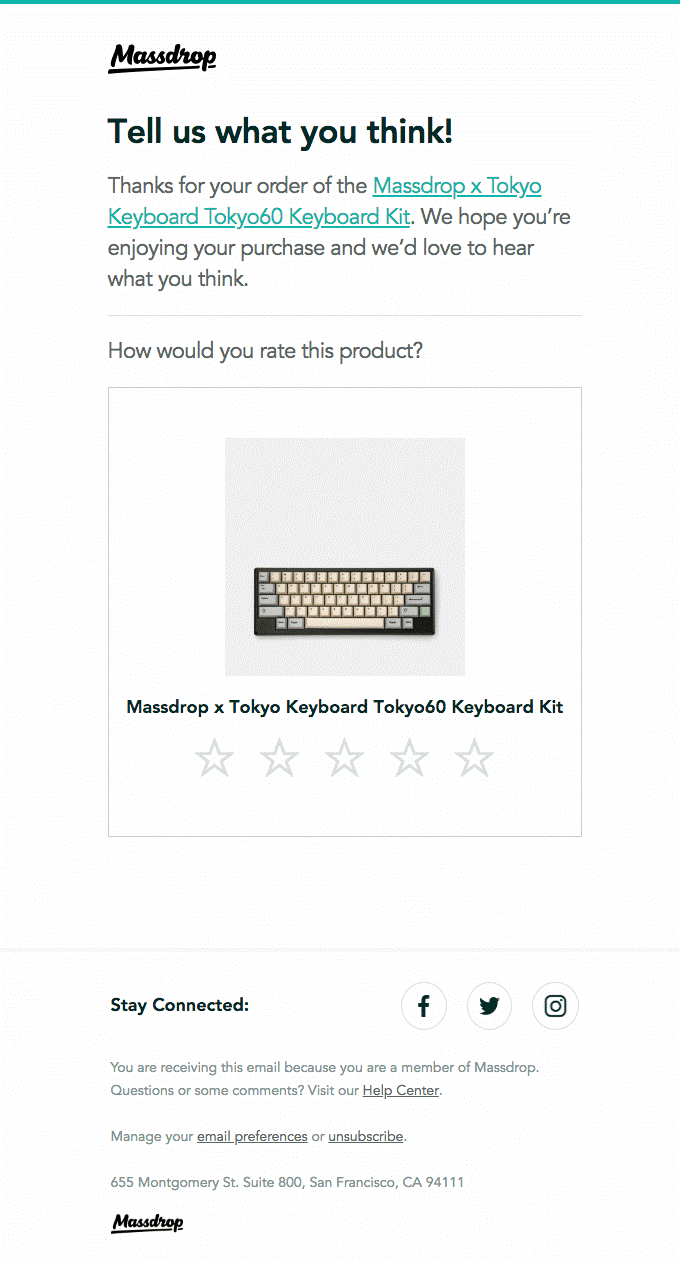
Knowing the different types of transactional emails, you can send is not enough; you ought to know the best practices as well. Here are a few that we have curated, which will help you get the best traction with transactional emails.
Transactional Emails Best Practices
It is important that you craft transactional emails such that you can maximize the open rates for your brand.
Here are a few best practices, which if you incorporate, will help increase your brand’s reputation online.
- The subject line: It is the first step to creating a transactional email campaign. You should have a subject line that connects with the audience and is relevant to the content you are planning to send them. keep the subject line as concise as possible. Too long or a bit unclear subject line can ruin your campaign completely. A personalized subject line is likely to get more opens for your email. If you use 60-70 characters in the subject line, you should be able to get the requisite traction.
- Personalize your emails: Make the email as personal as possible for better open rate. According to Aberdeen group personalized email gets an open rate of about 14% or more. Addressing the person by their name is a start. However, if you can gather more insights into the type of customer they are, you can offer better personalization tactics. For instance, how to use the product content, added to the email will always be welcome with the customers
- The perfect timing: When you are sending a transactional email, make sure you are sending it at a time, when the person is expecting to receive it. For instance, the confirmation emails should be sent immediately after the product has been purchased. The feedback email should be sent within a day or two of confirming delivery of the item. Nail the timing, and you have taken a step further towards conversion.
- Optimize for mobile: When designing the emails, you ought to keep the mobile devices in mind. Make sure to optimize every aspect of the design, from content to the white space, for the smaller devices, so that the user can view it properly. Short subject lines and minimal body copy works for the mobile devices.
Wrap Up
When sending a transactional email, you need to be clear with the message, incorporate best design practices and ensure a perfect timing to make sure that your emails are read.
Personalization will always increase your chances at getting better open rates. What type of transactional emails you need to send should be defined based on the action taken by the customer.
Don’t forget to optimize the emails for the mobile devices, as that will help increase open and retention rates for emails, thus increasing your conversions.
Digital & Social Articles on Business 2 Community
(28)
